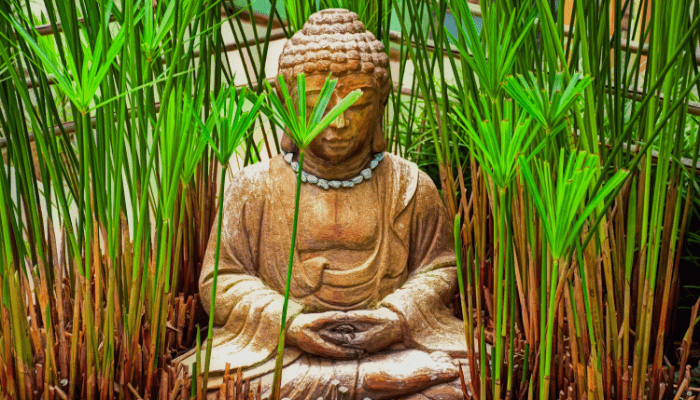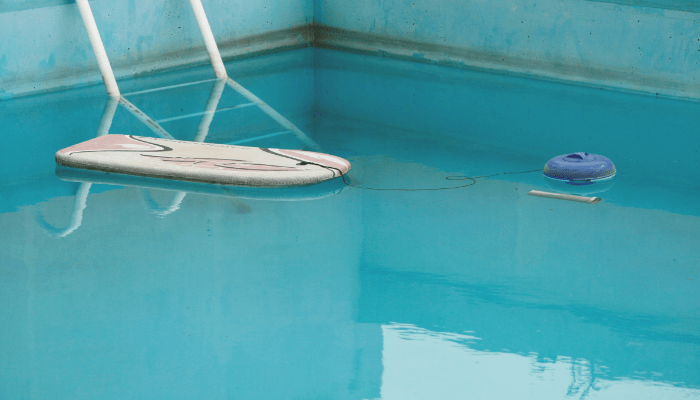Key Takeaways
A meditation garden is a purposefully designed space, indoors or outdoors, that encourages stillness, mindfulness, and calm through natural elements and intentional layout.
Core benefits include reduced stress, improved focus, deeper connection with nature, and a consistent place to practice mindfulness or quiet reflection.
Key elements include natural textures (stone, wood, gravel), calming plants, winding paths, comfortable seating, gentle water features, soft sounds, and subtle lighting.
Design starts with choosing a private spot, defining the vibe, sketching a simple layout, and selecting meaningful, low‑maintenance elements that engage all the senses.
Even small balconies or corners can become meditation gardens through potted plants, vertical greenery, a small fountain, and a single mindful seating area.
Daily rituals like breathwork, walking meditation, journaling, or simply listening help integrate the garden into your life.
For those who prefer professional help, designers like Oásis Biosistema can create custom gardens that blend beauty, function, and lasting peace.

Modern life feels like a never-ending group chat. Buzzing, pinging, demanding. So where do you go when your brain needs a breather and your phone just won’t stop screaming?
Not everyone has time for a full spa day, and let’s be real: those scented candles in your bathroom aren’t fooling anyone. What you need is something more grounded. Literally.
Enter: the meditation garden.
This isn’t just about placing a Buddha statue in the corner and calling it peace. A well-designed meditation or mindfulness garden can actively shift your nervous system. It becomes a living, breathing retreat, a space that invites calm, nudges you toward stillness, and doesn’t cost a plane ticket to Bali.
And the best part? You don’t need a palace-sized yard or a monk’s level of serenity to create one. You just need intention, a little know-how, and a willingness to get your hands (lightly) dirty.
Let’s dig in.
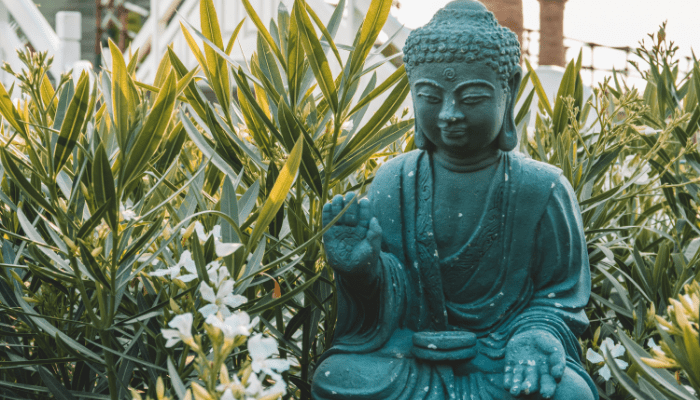
What Is a Meditation Garden?
A meditation garden is not just a place. It’s a practice with roots in Zen, Japanese, and Buddhist traditions that are designed to support stillness, silence, and slow, intentional living. Think of it as the opposite of a cluttered inbox. It’s a physical space built to reflect mental clarity.
This type of garden isn’t about floral overload or decorative perfection. It’s about stripping away the noise. Minimalist or lush, tiny or sprawling, a meditation or mindfulness garden invites you to be instead of do.
The keyword here? Presence.
Whether you’re using it for daily meditation, quiet reflection, or just five minutes of silence before someone yells your name again, this space becomes a reliable pause button for your nervous system.
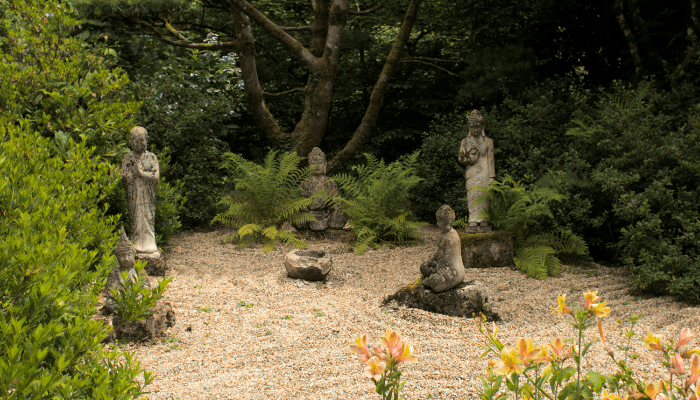
Benefits of a Meditation or Mindfulness Garden
Let’s break down what this garden actually does for you (besides making your neighbors jealous).
- Reduces stress: Even 10 minutes in a natural space can lower cortisol levels. It’s science.
- Improves focus: When your eyes rest on organic shapes and soft colors, your brain breathes.
- Encourages mindfulness: A dedicated space makes your practice easier to start and stick with.
- Connects you to nature: You’re part of an ecosystem, not just someone scrolling through it.
- Boosts creativity: Stillness doesn’t kill ideas, it feeds them. Ask any poet with a tree in their yard.
It’s not just about sitting still. It’s about remembering how to be still.
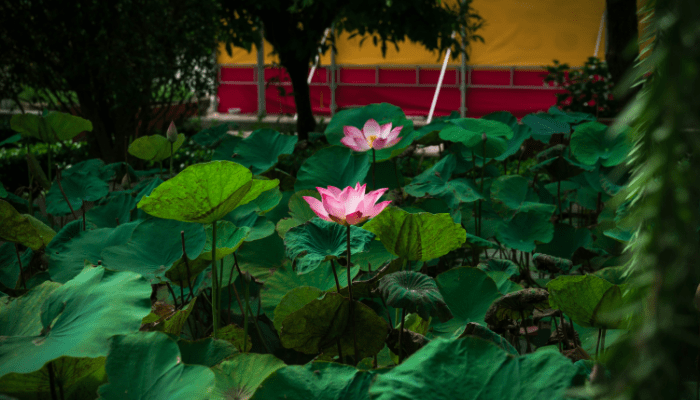
7 Key Elements of a Meditation Garden
Okay, let’s talk materials. No need to summon a Zen master or import sand from Kyoto. Just focus on a few core elements.
1. Natural Textures
Stone, wood, sand, gravel. These create structure without feeling rigid. Use them for paths, borders, or grounding focal points.
2. Plants That Don’t Scream for Attention
Go for calming greens and soft textures. Lavender, bamboo, moss, ferns, or even bonsai if you’re feeling fancy. Native plants work great and need less babysitting.
3. Paths with Purpose
Winding pathways invite slow movement. They subtly say: hey, slow down. Curves are better than straight lines here, because meditation isn’t a race track.
4. Seating That Feels Intentional
Stone bench. Wooden platform. Cushion on a shaded deck. Choose something that doesn’t double as your kid’s trampoline. This is your space.
5. Water Features
Doesn’t need to be a koi pond. A simple bubbling fountain, bird bath, or mini stream does the job. The sound of water calms the nervous system like magic. Real, wet magic.
6. Sound and Scent
Wind chimes. Leaves rustling. Maybe a gentle bell. Add some rosemary or jasmine nearby. Your nose deserves peace, too.
7. Lighting
Skip harsh lights. Soft solar lanterns, candles, or low LEDs make evenings feel sacred, not staged.
The goal? Create a place that feels like an exhale.
How to Design Your Own Meditation Garden (Step by Step)
Now that you’re excited, let’s get into the how. It’s not complicated. But it is intentional.
Step 1: Pick the Right Spot
Privacy beats perfection. Find a quiet corner, balcony, yard patch, or even an indoor nook with a view. Bonus if you can hear birds.
Step 2: Define the Vibe
Do you want it to feel sacred? Minimal? Jungle-like? Set a clear intention. It’ll guide every choice that follows.
Step 3: Sketch the Layout
Grab a notebook or a garden planning app. Mark out your seating, plants, and paths. Nothing too rigid—it’s a meditation garden, not a military base.
Step 4: Choose Meaningful Elements
Don’t just add what looks good. Add what feels good. A certain tree. A statue. A stone that reminds you to breathe. These are anchors.
Step 5: Make it Sensory
Add things that engage your body gently. Soft leaves to touch. Subtle fragrance. Textures underfoot. The more senses involved, the deeper the calm.
Step 6: Keep It Low-Maintenance
Your garden should reduce stress, not add to it. Pick drought-resistant plants if you hate watering. Avoid high-maintenance divas.
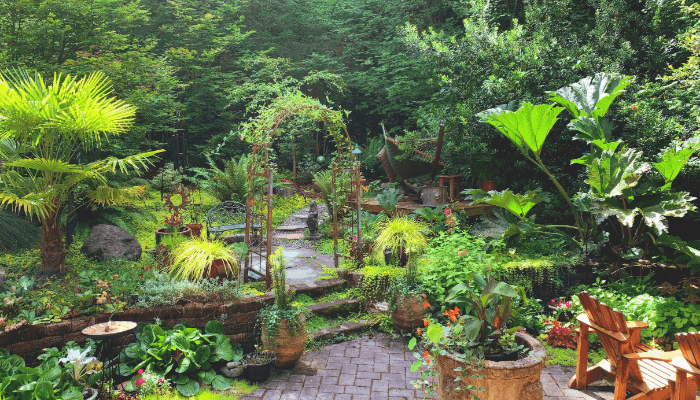
Small-Space and Balcony Meditation Gardens
Short on space? Doesn’t matter. Serenity doesn’t care about square footage.
- Use vertical gardens to bring greenery into tight areas.
- Add a small water bowl or tabletop fountain.
- Choose pots with texture and calming color palettes.
- Hang soft chimes or a tiny bell.
- Lay down a single cushion or stool near a plant you love.
The trick? Every inch has purpose. No clutter. No chaos. Just calm, curated space, even if it fits inside a yoga mat.
Daily Mindfulness Practices for the Garden
Your garden isn’t just a looker. Use it. Show up in it.
Here are a few simple rituals:
- 5-minute breathwork as the sun rises
- Walking meditation around your path barefoot, if possible
- Journaling under a tree or next to a small plant
- Evening candle ritual to mark the end of your workday
- Listening meditation: just sit and notice the sounds, nothing else
No pressure. No timer. Just presence.
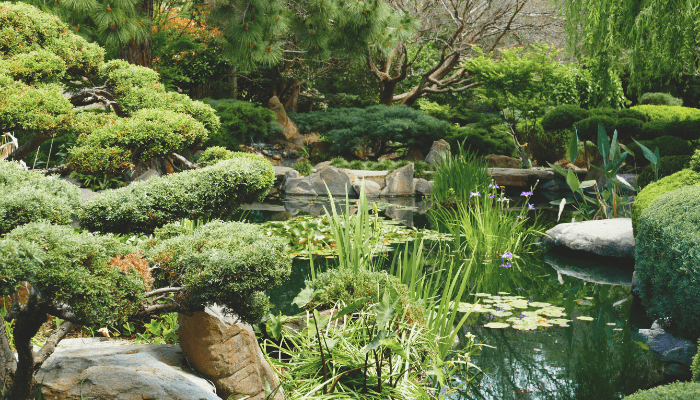
Oásis Biosistema Can Build It for You
Now, maybe you’re reading this and thinking: “Okay, love the idea. But I’m not exactly the DIY type.”
That’s where Oásis Biosistema comes in.
We specialize in designing and building customized meditation and mindfulness gardens, spaces that match your lifestyle, your climate, and your sense of peace. Whether it’s a full backyard transformation or a serene corner of your terrace, we handle it from vision to reality.
You bring the desire for stillness. We’ll bring the design, the dirt, and the details.
Because peace shouldn’t stay on your Pinterest board. Let’s build it beautifully, intentionally, and stress-free.
Conclusion
A meditation garden isn’t a luxury. It’s a low-tech mental health tool you can step into barefoot with your morning coffee and a cluttered mind.
You’ve now got a blueprint. From plants to paths, sounds to seating, you know how to turn any outdoor (or even indoor) space into a haven for mindfulness. And it doesn’t have to be perfect. It just has to feel like you.
Start small. A potted lavender by the window. A stone bench under your favorite tree. One quiet corner where your brain can finally stop multitasking.
Because here’s the truth: peace doesn’t come knocking on your door. You build it. One rock, one breath, one mindful step at a time.
Now go grow some silence.
FAQ
What is a meditation garden?
A meditation garden is a peaceful outdoor space designed to promote mindfulness, relaxation, and spiritual reflection. It typically includes natural elements like plants, stones, water features, and seating areas to create a calming atmosphere.
How much does it cost to go to Self-Realization Fellowship meditation gardens?
Visiting the Self-Realization Fellowship meditation gardens is free of charge. Donations are welcomed but not required.
How to build a meditation garden?
To build a meditation garden, choose a quiet location and incorporate calming elements such as native plants, a water feature, gravel or stone paths, and comfortable seating. Use symmetry and minimalism to foster a sense of peace and balance.
What is the purpose of the meditation garden?
The purpose of a meditation garden is to create a serene environment where individuals can relax, reflect, and practice mindfulness or meditation. It helps reduce stress and encourages a connection with nature.

